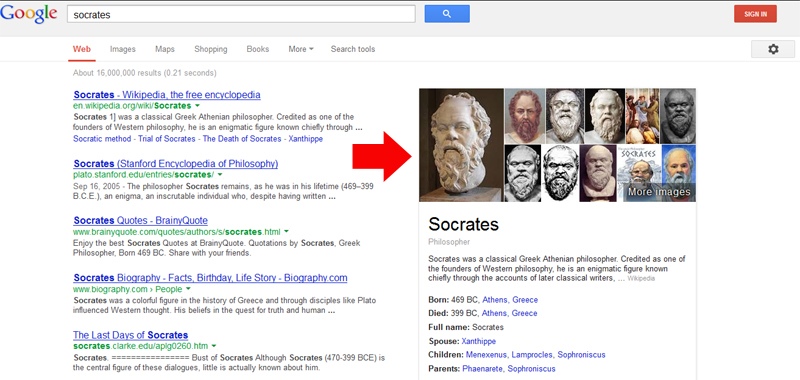Have you noticed that neat little sidebar on your search engine results page? This can be attributed to Google’s recent launch of their Knowledge Graph. This has stirred both concern and interest from end users and organizations. It also redefines SEO, and forces organizations to evaluate external sources, such as Wikipedia and Google+, as they are fueling search.
With over 18 billion facts and more than 570 million objects, this is the foundation for every search in Google. However, it’s more about serving data that is tailored to the user. The three main sources behind this content are Wikipedia, Freebase and the CIA World Factbook.
This video has some highlights of Google’s Knowledge Graph, and how it provides a richer and tailored experience for the user.
Ultimately, that is what is behind the content in the sidebar on the results page. For a high level summary of this, follow this link: http://www.google.com/insidesearch/
What can you do about it?
Update your Wikipedia page:
While you can’t control the content on Freebase or the CIA factbook, you can control the content of our Wikipedia page. As long as you are compliant with Wikipedia’s policy and guidelines for submitting content, it will serve as a key source for the Knowledge Graph, and ultimately, how you appear in organic search.
Get structured:
I would also recommend looking at the data structure of your site – this page has some great insight on this process and you should check out the Data Highlighter tool for proper indexing.
This blog post from Google has some great tips for our Web team to define our data structure, including the use of Data Highlighter. Here are some details on it: https://support.google.com/webmasters/answer/2692911
Heard of G+?
For a platform that was once dismissed as the stepchild of Facebook, it now plays a significant role in SEO and can not be ignored. Again, Google will display activity of indexed G+ pages in the sidebar, so it’s key that you have a page in place. However, this only applies to logged in Google users. If the user is not logged into Google, it will feed content from Wikipedia and Google Local. Above all, I would strongly recommend exploring a Google+ page and if you have one, make sure your content is updated on a regular basis. This is especially true since the most recent posts will be displayed.
What’s next?
As Google continues to be in a constant state of change, it’s key that you do the research and closely monitor progress and new developments. To illustrate the rapid growth, the recent launch of their “Knowledge Graph Carousel” adds more complexity to the search process by displaying a cascade of associated images at the top of the results page. http://searchengineland.com/google-officially-launches-knowledge-graph-carousel-for-local-search-163809
Let me know your thoughts.


Recent Comments